Testosterone.
It’s what makes a man a man.
It builds muscle, creates power, gives you sexual virility and, literally, puts hair on your chest!
It’s no wonder that guys want more of it.
For thousands of years, men have been trying all manner of things to get more testosterone coursing through their veins. The Ancient Greeks started giving bull’s balls to their young men in order to give them the strength and virility of this beast of burden which was considered the ultimate symbol of strength. Over the centuries the practice was carried on by strongmen so they could get more testosterone coursing through their veins.
Fortunately, we’ve become a lot more scientific since then. Part of that scientific advancement has led many down the steroid route in order to max their testosterone levels. That’s not a route we recommend. It’s dangerous, unnatural and illegal.
And, it’s totally unnecessary.
That’s because there are many ways to boost your testosterone levels without resorting to steroids. In this article we are going to break down the six most effective ways to increase your testosterone levels naturally.
We think this is the most comprehensive and scientifically up to date ‘T’ boosting guide you’ll find. We’ve written it to be your one-step guide to naturally maxing out your testosterone levels.
So, let’s get started.
5 Key Methods to Boost Testosterone
Contents
- 1 5 Key Methods to Boost Testosterone
- 2 3 Types Of Testosterone
- 3 #1 Testosterone Booster: Working Out
- 4 #2 Testosterone Booster: Focused Nutrition
- 5 #3 Testosterone Booster: Reducing Prolactin
- 6 #4 Testosterone Booster: Supplementation
- 7 #5 Testosterone Booster: Eliminate Testosterone Killers
- 8 Summing It All Up
- Working Out
- Focused Nutrition
- Decrease Prostaglandin
- Supplement
- Eliminate Testosterone Killers
3 Types Of Testosterone
Your body makes a single type of testosterone. However, once it’s released into the bloodstream, the way that it becomes bound to certain proteins puts it into one of three classifications:
Free Testosterone
Free Testosterone is not bound to any protein molecules at all. This the most biologically available form, able to perform any of the functions that we’ve already spoken about. However, free testosterone only comprises 2-3% of your total testosterone.
SHBG Bound Testosterone
SHBG Bound Testosterone is testosterone that is bound to the sex-hormone binding globulin. 40-45% of your total “T” is made up of this type.
Albumin Bound Testosterone
Albumin Bound Testosterone is bound to a liver producing hormone that controls extra cellular fluid volume. This makes it inactive for other functions. However, because the bond between testosterone and albumin is weaker than that between “T” and SHBG, when your body needs more free testosterone, it will turn to albumin bound testosterone, breaking it apart and converting it to free testosterone. For this reason, ABT is generally classified along with free testosterone as readily available “T”.
#1 Testosterone Booster: Working Out
Exercise boosts testosterone. And the best form of exercise to turn on the testosterone valve is resistance training. Recent research has shown that there are three key training factors that will maximize post workout testosterone production:
- Training large muscle groups
- Lifting heavy
- Using short rest periods between sets
If you’re not already training with weights, you should definitely start. And if you have been pumping iron for a while, you need to make sure that your training is abiding by the three “T” boosting rules above.
In this section, we will present the ultimate workout that will allow any guy, even those with low levels of testosterone, to, not only produce a massive testosterone surge 30 minutes after they walk out of the gym, but to pack solid, manly muscle onto their body fast.
To build solid muscle, you need to perform compound exercises that release the two key muscle building hormones – testosterone and human growth hormone. The routine we recommend involves just 6 key compound moves. The focus of the workouts should be on . . .
- Increasing the weights
- Using low-medium rep ranges (3-8 reps)
- Resting 2-3 minutes between sets
The Workout
Squats (4 x 6-12 reps)

Dead-lifts (4 x 6-12 reps)

Pull Ups (4 x 6-12 reps)

Bench Press (4 x 6-12 reps)
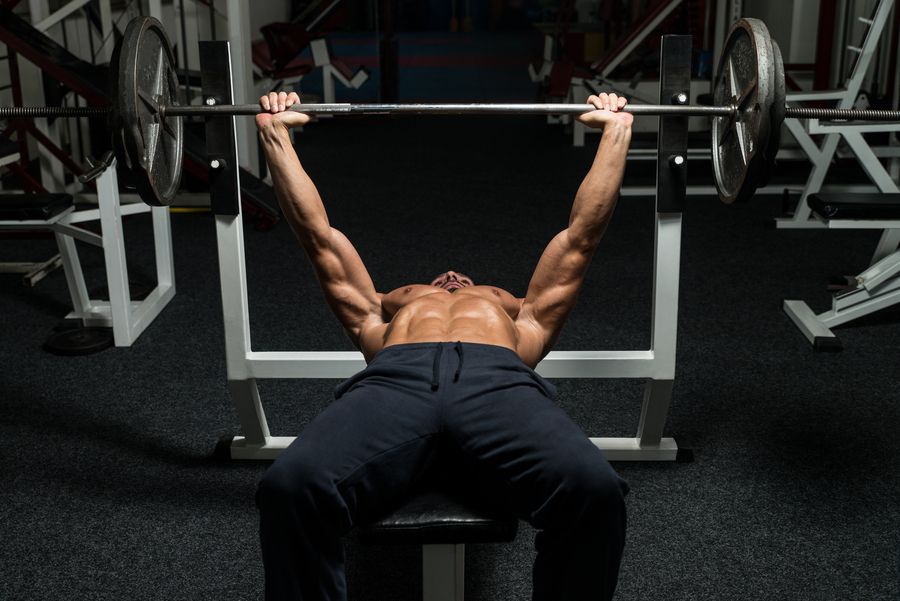
Kettlebell Thruster (4 x 6-12 reps)

That’s the workout. There’s no isolation moves here – no curls, flys, leg curls or lunges. Your total focus will be on the big 6 mass builders because they are the moves that will give you the best bang for your buck!
Do this full body workout three times per week on alternate days. Monday, Wednesdays and Fridays is best if you can swing it. Don’t do more than your prescribed workout. Just be sure that you are totally focused on making every rep count while you are doing it.
You training mantra to boost your ‘T’ levels and build maximum mass should be . . .
“Get in, Work Like Hell and then Get Out!”
#2 Testosterone Booster: Focused Nutrition
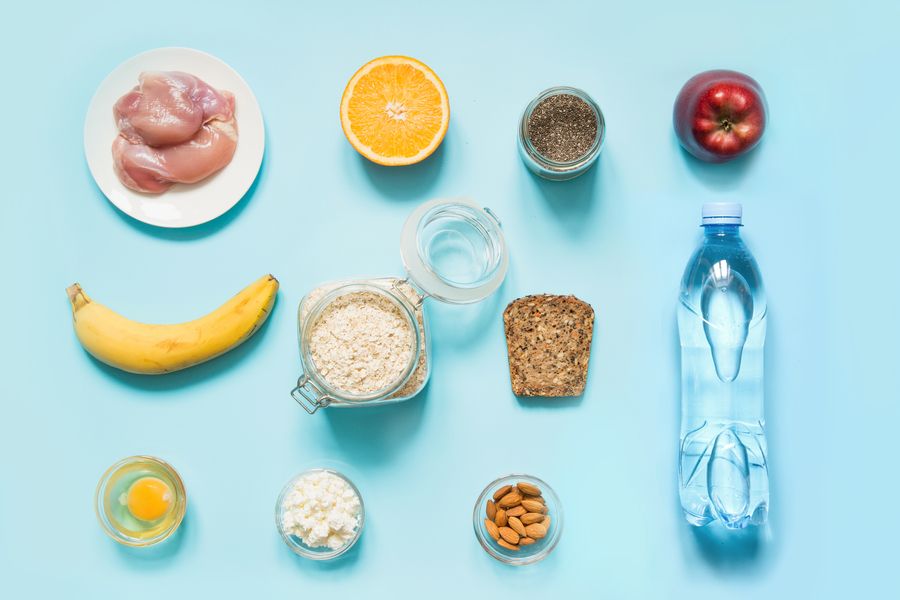
“T” Boosting Nutrition Tips
- Eat every 3 waking hours for a total of 5-6 meals per day
- Eat a sensible balance of carbohydrates, proteins and healthy fats
- Stay away from refined carbs and sugar
- Drink 2.5 liters of water per day
- Calculate your daily caloric needs
- Work out your macronutrient ratios (calories, grams) for each meal
- Fuel your exercise training with a pre-workout meal
- Within an hour of your training get quality carbs into your system
- Take in just 10% of your daily carbs for dinner
- Allow yourself a single cheat meal every week
- Eat 25% of your day’s calories for breakfast
Foods to eat regularly . . .
- Grapes
- Tuna
- Pomegranate
- Garlic
- Honey
- Milk (not soy)
- Eggs
- Cabbage
- Oysters
- Oyster Extract – Oysters are a fantastic source of zinc, which is essential for raising testosterone levels. If you have low zinc levels, your body will produce more estrogen – and, as you know, that’s a female hormone!
- Protein Powder – Protein builds and repairs body tissues, including muscle tissue. It is, therefore, vital to boosting your testosterone levels. Its job is to accelerate muscle growth by rebuilding stressed muscles after vigorous exercise. Get extra protein by downing a whey protein smoothie to get fast absorbing protein into your body quickly. Use it to get your protein intake up to 1 gram per pound of bodyweight.
- Pomegranate – According to one study, pomegranates were able to increase testosterone levels by an average of 24%. Pomegranates increase blood flow, and increase nitric oxide production. Pomegranates are also anti-estrogen because they have a limiting effect on the aromatase enzyme which converts testosterone to estrogen.
- Wheat Bran – Wheat bran is able to jack up your “T” levels by boosting the mineral magnesium. A study out of Turkey showed that boosting your magnesium levels can significantly improve your testosterone levels. It was even more effective if teamed with intense weight training.
T-Boosting Smoothies
Everyone loves smoothies – they’re easy to make, taste great and are packed with health giving ingredients. But the real beauty of the smoothie is that you can tailor them to any particular need by adding ingredients that address that specific need.
When it comes to boosting your Testosterone levels, one or two “T” enhanced smoothies per day will do wonders for your manhood.
So, what ingredients need to be in your smoothie in order to drive up your “T” levels?
Antioxidants are like an insurance policy for your body. It will protect your testosterone from free radical damage. Vitamin E prevents oxidative stress and has been seen to contribute to age induced loss of testosterone.
You can get a great source of antioxidants by adding such dark berries as acai, blackberries and blueberries to your smoothies. Another effective antioxidant is dark chocolate, which includes nitric oxide boosting ingredients to increase blood flow. This will help with erectile dysfunction .
Another great antioxidant to add to your smoothies is Pomegranate juice. “P” juice is also an effective testosterone booster in its own right. In one study 2008 study, pomegranate juice dramatically boosted the testosterone levels in male rats.
Vitamin C not only acts as an antioxidant, but it helps to control cortisol levels. Cortisol is an effective testosterone blocker. So, adding Vitamin C rich ingredients into your “T” boosting smoothie makes a whole lot of sense.
Two more antioxidant boosting ingredients that should be added to your smoothies are spinach and almonds. Add almonds to your smoothies in the form of almond meal or almond butter.
You definitely want to add protein in order to boost your “T” levels, but make sure that you don’t overdo it. The reason is that excess levels of testosterone will stimulate the release of cortisol.
You can and should add a scoop of protein powder to some of your smoothies, however, try to rely on natural sources of protein, such as dairy or almond milk. Just avoid soy milk or soy based protein, which can actually lower your testosterone levels. Nut butter is another smart addition which can also make your shake smoother and more consistent.
Monounsaturated fats have been shown to help boost “T” levels. This is in addition to all of the other health promoting benefits of these healthy fats. Nut butter is a great source, as is coconut water and avocado.
3 Great T Boosting Smoothies
#1 - Sunshine Smoothie:
Ingredients:
- 1 cup of chopped pineapple (fresh is best, but tinned will work in a pinch)
- 1 ripe banana
- 1 kiwi (peeled)
- 1 cup of baby spinach
- A small handful of fresh mint
- 1 cup of coconut milk
Steps:
- Place all the ingredients in the Blender cup and place in the fridge overnight.
- In the morning, place on the ninja and blitz for 5 seconds. Take the cup and enjoy from home, the car or your workplace.
#2 - Grapefruit Smoothie
Ingredients:
- 1.75 oz. pink grapefruit juice
- 1.75 oz. yellow grapefruit juice
- 1.75 oz. orange juice
- crushed ice - optional
- A small handful of fresh mint
- 1 cup of coconut milk
Steps:
- Mixed the freshly squeezed juices
- Cover with crushed ice and serve
#3 - Avocado-Coconut Smoothie
Ingredients:
- 2 slices avocado
- 2 oz. nonfat cottage cheese
- 1 tablespoon coconut oil
- 2.75 oz. water
- colored coconut flakes
- 1 cup of coconut milk
Steps:
- Peel the avocado carefully, remove the pit and out the flesh in the blender.
- Add the non-fat cottage cheese, coconut oil and the water.
- Stir the ingredients in the blender.
- Top with some colored coconut flakes.
#3 Testosterone Booster: Reducing Prolactin

Back in 2012, researchers in Rochester undertook a study that involved 1077 men with low levels of testosterone. The team were looking for the root cause of these men’s problem. The study participants had “T” levels that were well below the already abysmal male average, so the researchers knew that something more than natural aging was at play here. Yet, what they discovered completely floored then – and caused a tidal wave through the research community.
The team discovered that low testosterone levels were certainly contributed to by lifestyle factors. Natural aging, too played a part. But the actual cause of the problem was something else entirely – something that had never been considered before.
These researchers identified that the common factor among these men with significantly reduced testosterone levels was faulty signaling in the pituitary gland, located at the base of the brain. This caused the pituitary gland to over produce a hormone known as prolactin.
So, what is prolactin?
Prolactin is a hormone that is produced by the pituitary gland. It is named prolactin because of its overall role in lactation. Its primary role is to produce milk in lactating women.
Yet, it has wide ranging effects on the body.
It acts on the reproductive system as well as influencing the behavior of the immune system. In fact, prolactin has been shown to have over 300 functions in the bodies of both males and females.
Prolactin is also known as the milk hormone, PRL, leutotropic hormone, and LTH. In humans it is produced in both the front portion of the pituitary gland and in a range of sites elsewhere in the body.
Prolactin is released into the bloodstream by a process called exocytosis. One of the main regulators of the production of prolactin from the pituitary gland is the hormone dopamine, which is produced by the hypothalamus. This is the part of the brain located directly above the pituitary gland.
So, dopamine restrains prolactin production. This means that the more dopamine there is, the less prolactin is in the system.
Ironically, prolactin itself enhances the secretion of dopamine. So, this creates an overall negative feedback loop.
Estrogen is another key regulator of prolactin. It has been shown to increase the production and secretion of prolactin from the pituitary gland. Studies have actually shown small increases of prolactin in the blood circulation of their reproductive cycle, where estrogen levels are at their highest.
This is also the case during and after pregnancy, which makes sense because a higher level of prolactin is needed for the lactation process to kick in.
So, what happens to you if you have too much prolactin in your body?
Prolactin acts antagonistically towards testosterone.
In other words, when one is high, the other is low. The reason that prolactin production inhibits the release of testosterone has to do with a key hormone in the production of testosterone, gonadotropin-releasing hormone (GnRH), which is released by the hypothalamus.
GnRH directly stimulates the Leydig cells of the testes to produce testosterone. In the absence of GnRH, however, no such stimulation occurs.
The result of the inhibition of testosterone production by prolactin is profound. There will be an instant drop off in sex drive. You’ll also lose muscle tissue and find it virtually impossible to add new muscle. But there’s even worse news . . .
High prolactin levels in men can lead to the development of breast tissue. That’s right – large, girly breasts. This is accompanied by fatigue, irritability and weight gain.
The Rochester researchers back in 2012 found that the higher the levels of prolactin the body, the lower the levels of testosterone.
Finally, the had discovered the root of the low testosterone problem.
Although aging, toxins, lifestyle habits and poor food choices were all contributing factors, the underlying cause of low testosterone levels in men is elevated levels of the hormone Prolactin!
Prolactin reduction is the key to bringing up your testosterone levels. By stopping the shackling of the vital Leydig cells, the body’s natural process of testosterone production is able to proceed unhindered.
The Quest To Drive Down Prolactin
The Quest to Drive Down Prolactin
Having identified what the problem was, the researchers were next tasked with finding the most effective way to safely and naturally bring down prolactin levels in order to stop the interference with the stimulation of the Leydig cells.
Now, this is where things got really interesting.
The research team scoured the planet in search of the super nutrients that could take on prolactin and dominate it in order to give testosterone levels a chance.
It was frustrating work. They tried every micronutrient and ancient herbal remedy that they could find. Yet, nothing seemed to have an effect on prolactin. The research team was running out of both money and patience.
And then it happened.
They were trialing an ancient Indian herbal remedy, half expecting a negative result, just like all the others. Instead, they started to see study participants testosterone levels going up …and keep on going up.
At the same time, prolactin levels were dropping.
This was it.
They’d finally stumbled across a herb that could naturally curtail the harmful effects of prolactin.
It was called Ashwagandha.
Also known as winter cherry, is a commonly used herb in Ayurvedic medicine for weight loss and a range of other beneficial health uses. This ancient herb is believed to be extra helpful for people who overeat by giving a fantastic boost to the metabolism.
It also eliminates digestive irregularities. The natural antioxidants in ashwagandha also dramatically improves overall health and promotes better, more sustainable fat burning. Ashwagandha displays natural antimicrobial effects and may improve immune function to keep you healthy.
The Indian word Ashwagandha actually refers to the smell of a horse. This gives us a hint of its ability to positively affect testosterone output. For centuries, it has been used throughout the Indian sub-continent to improve men’s sex drive. They didn’t know why – but now we do.
Ashwagandha delivers a two-pronged approach by
- Lowering prolactin levels
- Increasing testosterone levels
At the same time.
This was shown by a study out of King George’s Medical University in India, in which supplementation with ashwagandha over a period of 12 weeks saw a reduction in prolactin levels of 15%, with a corresponding increase in testosterone levels of 40%.
Ashwagandha is purely and simply gold when it comes to boosting your testosterone levels. You need to start supplementing with it today and continue every day.
The preferred form of Ashwagandha supplementation is as a root extract in the form of a capsule. The optimal dose is 6000 mg per day, divided into thee 2000 mg doses. It should be taken with meals.
#4 Testosterone Booster: Supplementation
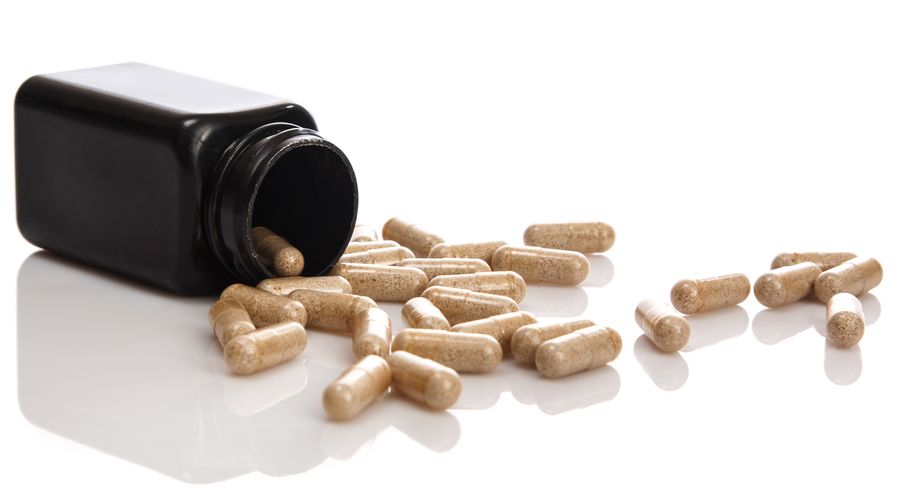
Having got your testosterone boosting nutrition and exercise protocols in place, you are in a position to supplement them with products that contain scientifically proven herbal ingredients, along with minerals and vitamins that have been shown to boost your ‘T’ levels.
In this section we provide a run-down of the most testosterone boosting herbal compounds.
Prolactin reduction is the key to bringing up your testosterone levels. By stopping the shackling of the vital Leydig cells, the body’s natural process of testosterone production is able to proceed unhindered.
We’ve already identified one key supplement that will allow you to put prolactin in its place. Ashwagandha is the super supplement that should form the cornerstone of your supplementation program.
There are, however, other supplements that will work alongside Ashwagandha to put your “T” production into turbo drive by inhibiting the release of prolactin. In this section, we reveal 5 more powerful prolactin inhibitors.
Mucuna Pruriens
Mucuna pruriens, also known as the velvet bean, is a herbal extract which has the potential to boost growth hormone (GH) levels and speed up intra workout recovery. Mucuna pruriens has been shown to significantly increase L-dopa levels in the body, which is required to augment GH release.
In addition, the herb actually contains a significant amount of L-dopa (L-3,4-dihydroxyphenylalanine), which works in combination with Tyrosine in the human body to enhance GH levels. Mucuna Pruriens also boosts brain health by increasing the production of dopamine.
As we saw last section, dopamine is a key regulator of prolactin. So, the fact that mucuna pruriens increases dopamine production makes it an extremely effective inhibitor of prolactin.
Tribulus Terrestris
Originally introduced to support the sports supplement market by a small California based company under the brand name “Tribestan”, this herbal extract, originating in Bulgaria, has become very popular in the bodybuilding world. It has been promoted as a testosterone booster from the beginning in the United States, but in Bulgaria, it has been used for years as a treatment for impotency and infertility.
Although tribulus terrestris has been used as a treatment for decades, no one ever really understood why it worked – at least not until the early 1980’s. It was then that researchers at the Chemical Pharmaceutical Research Institute in Sofia, Bulgaria began to study the biological effects of this potent herb.
Researchers found that tribulus terrestris may have the ability to increase natural testosterone production by boosting levels of “lutenizing hormone” (LH), a pituitary hormone responsible for regulating testosterone levels. LH actually turns on natural testosterone production. One Research Institute study revealed that daily dose of 750 mg of Tribulus Terrestris given to healthy mean increased their LH by and average of 72% and subsequently hiked free testosterone levels by an impressive 41%.
You should take 250 mg of Tribulus Terrestris 3 to 4 times per day.
Ginseng Extract
Ginseng is a powerful adaptogen that greatly improves the body’s ability to cope with physical, environmental and emotional stress. It is an effective weight loss aid due to its ability to rev up sluggish metabolisms, and boost energy levels.
A number of studies with rats have revealed ginseng to be a potent inhibitor of prolactin. In fact, in one study, rats who were treated with American Ginseng had an astounding 50% reduction in their levels of serum prolactin.
Another huge benefit of ginseng is its proven ability to increase the body’s natural production of nitric oxide (NO). This directly leads to an increased ability to get and maintain an erection.
Begin your ginseng dosage at 100 mg per day and work up to a max of 300 mg.
Ginkgo Biloba
Ginkgo Biloba is one of the oldest plants in the world. It improves the circulation to the brain, while also boosting microcirculation of blood in the capillaries. These effects combine to boost metabolism.
Ginkgo has also been seen to increase the body’s production of dopamine, thus acting as a prolactin inhibitor. In a 2008 study, which was published in Hormonal Behavior magazine, ginkgo biloba was given to male rats over a 28-day period. Researchers reported a significant increase in Leydig cell production. This was coupled with a significant reduction in serum prolactin levels, along with increased levels of dopamine.
MACA Powder
Maca root is a cruciferous vegetable, putting it in the same family as cauliflower and broccoli. It is also an adaptogen herb, which makes it very unique. It is grown in the high altitude areas of South America. It has been used throughout history for its ability to balance hormones, and improve libido. Maca is great at lowering cortisol levels, bringing down your stress levels and helping to balance hormones.
Maca naturally improves testosterone production by raising dopamine levels in order to inhibit the production of prolactin. Maca is also able to boost the body’s natural production of Nitric oxide. In this way it helps with erectile dysfunction.
Begin your maca supplementation with half a teaspoon of the powder per day, increasing to a max strength of 3 teaspoons.
#5 Testosterone Booster: Eliminate Testosterone Killers

High Polyunsaturated Fat Vegetable Oils
The majority of vegetable oils are very high in polyunsaturated fats. In contrast to monounsaturated fats, which boosts testosterone, taking a lot of polyunsaturated fats into your body will lower your testosterone levels.
As a result, polyunsaturated vegetable oils are terrible for anyone interested in boosting their testosterone levels. Even if you are eating testosterone positive foods like steak or chicken, cooking them in these oils will leave you in a negative balance.
An additional problem with polyunsaturated fat vegetable oils is that they contain a lot of Omega-6 fatty acids. The optimum ratio of omega fatty acids is 1:1 between omega 3 and omega 6. Yet, most people have a ratio of 1:20. That is not goof for your testosterone levels.
Mint
There are a large number of variants in the mint family. Included in these are spearmint, peppermint and mint tea. As you probably know, mint is used frequently in mouth washes and products that promote oral hygiene. While there is plenty of evidence that mint is good for your mouth, the same certainly cannot be said for your testosterone levels.
A study that was done in 2005 revealed that taking 20 grams per liter of peppermint tea reduced the total level of testosterone by 23 percent in only seven days. Even more alarming, spearmint tea saw a reduction of 51 percent.
Alcohol
Forget about what beer commercials have been telling us for the last hundred years, alcohol and manliness have nothing to do with each other. In fact, it is quite the opposite.
It is true that your first few drinks will actually increase your testosterone levels. But then the alcohol will cause very high estrogen levels in your body – and dramatic dips in your testosterone levels.
However targeted use of alcohol can actually boost your testosterone levels. A study out of Finland found that subjects who had half a glass of vodka immediately after resistance training boosted their testosterone levels by 100 percent!
Soy Products
Soy foods have become a huge sector of the health food market. Soy protein has become especially popular because it is a fat free source of plant-based protein. However, there are a couple of enzymes in soy that makes it bad news for your testosterone levels. These are called genistein and daidsein. They are two examples of what are known as phytoestrogens.
The problem with phytoestrogens is that they promote release of the female sex hormone estrogen. Even a single protein drink dosage of 25 grams with ratchet up your estrogen levels while dipping your testosterone levels.
Trans Fats
Trans fats are man-made fats that are made by having hydrogen pumped into liquid oils. A common example of a trans fat is margarine. French fries that are fried in hydrogenated oils became filled with trans fats. You should, as a result, always ensure that your fries are cooked in non-hydrogenated cooking oils.
Trans Fats also happen to be very high in polyunsaturated fat levels. We’ve already established that polyunsaturated fat is a disaster for your testosterone. So, taking it in the form of a Trans Fat is not something you want to be doing.
Is Your Technology Killing Your Testosterone?
The drop off in the average sperm count has been dramatic over the last 50 years. However, that drop off has skyrocketed in the last 20 years.
What accounts for it?
Well, what has mirrored this decline in testosterone levels since the mid-1990s? We’ve embraced computer technology – big time. In fact, most people in the Western world spend the majority of their waking hours either with a laptop on their groin, a cell-phone in their ear or a screen in front of their eyes.
Is this parallel – a severe drop off in testosterone levels and their dramatic rise in the use of technology – a mere coincidence?
The facts tell us that it is not.
Consider laptop computers …
These portable computers are designed to sit on your lap. They’ve freed us from the confines of the desktop and allowed us to take our office wherever we wanted. It’s no wonder that they have become hugely popular.
But, there’s a downside to the convenience of the laptop. There’s a lot of heat that comes out of your portable computer. And that heat is situated directly over your groin. So, what does heat do to sperm?
It destroys it.
In addition, to the effects of heat on your sperm count, your laptop is also emitting electromagnetic frequency (EMF) radiation. At high levels, EMF can cause havoc to your testosterone levels. EMF radiation is measured with what is called a gauss meter. A safe level of radiation is 0.3 milligauss. So, what does the average laptop emission read on the gauss meter . . ?
200 milligauss
That is 600 times the safe level!
And that is something to take seriously.
Even if you apply all of the other recommendations in this book and continue to use your laptop without taking safety measures, you will NEVER bring up your lagging testosterone levels.
So, short of going back to the archaic desktop, what is the solution?
It’s actually pretty simple. The EMF field is about 12 inches thick. So, to protect your body from its effects you need to place a 12 inch thick pillow between the laptop and your body. As well as keeping your groin clear of the EMF radiation, it will also keep the heat away from your groin.
You can also purchase an EMF shield protector to protect your body from EMF radiation.
So much, for laptops.
Even more pervasive are cell-phones.
Back in the year 2000, 28% of American men owned a cell-phone.
Today, that figure is up to 91%.
That is bad news for your sperm count. It turns out that the EMF radiation levels that come from cell phones are even greater than your laptop. That’s because cell phones are constantly sending out signals in search of towers. And it gets worse – most of us keep our cell phones on and close to our groin (usually in our pocket) for as many as 12 hours each day. This has a disastrous effect on your sperm count.
Not only does EMF radiation reduce your sperm count. It also negatively impacts the quality and motility of your sperm.
A study, which was published in the January, 2012 issue of Fertility and Sterility magazine, focused on how radiation emitted from laptops affected sperm count. Semen samples from 29 healthy men were studied after a 4 hour exposure to WiFi radiation. Here are the results compared to a control group:
- WiFi Group: 25% of the sperm stopped swimming.
- Control Group: only 14% stopped.
- WiFi Group:9% of the sperm showed DNA fragmentation or irreversible damage in the genetic code.
- Control Group: only 3% showed these signs.
Here is what the lead author of the study, Dr. Conrad Avendano, concluded . . .
You can protect your testosterone from your cell phone by following these simple guidelines:
- Do not store your cell-phone near your groin
- Purchase a microprocessor that neutralizes harmful radiation
- Store your cell-phone in a briefcase, front shirt or coat pocket
Summing It All Up
Congratulations!
Reclaiming the virility of your youth, while boosting your muscle building potential and recapturing your inner ‘he man’ is no longer a pipe dream.
You now know the hidden secrets to pumping extra testosterone into your body.
- Hard and heavy workouts
- High protein foods
- Take ashwagandha to reduce prolactin
- Take supplements that include:
- Mucuna pruriens
- Tribulus terrestris
- Ginseng extract
- Gingka biloba
- MACA powder
- Eliminate the following testosterone killers
- High Polyunsaturated Fat Vegetable Oils
- Mint
- Alcohol
- Soy products
- Trans fats
- Be aware of the detrimental effect that your technology can have on your testosterone levels
All that remains is to go get it done!

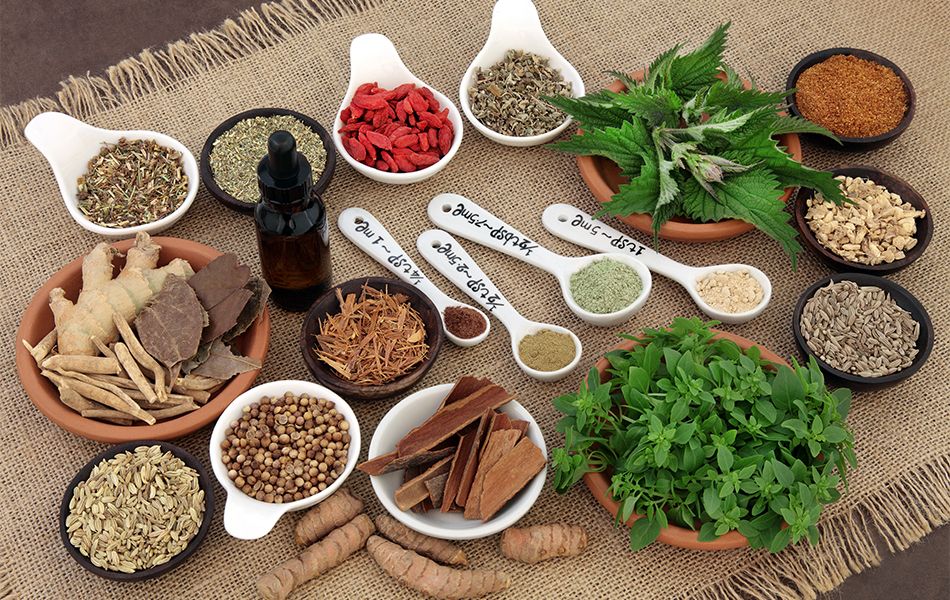


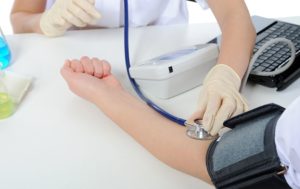
Pingback:rarest gemstones